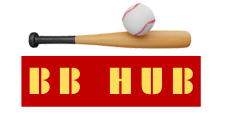Baseball Position Numbers: What They Are and Why They Matter?
Baseball might look simple at first — just hit the ball and run, right? But dig a little deeper, and you’ll find a highly organized system where every player has a specific role. One of the most useful tools for understanding this is the baseball position numbers system.
Let’s explore what these numbers mean, the need for baseball position numbers, and what each position actually does on the field — in a way that’s easy to follow, even for beginners.
What are the nine positions in baseball?
Each baseball team has nine defensive players on the field at a time. These players are placed in nine positions which are numbered and named as follows:
1 = Pitcher
2 = Catcher
3 = First Baseman
4 = Second Baseman
5 = Third Baseman
6 = Shortstop
7 = Left Fielder
8 = Center Fielder
9 = Right Fielder
These positions are traditionally divided into three groups:
Battery: Pitcher (1) and Catcher (2)
Infielders: First Baseman (3), Second Baseman (4), Third Baseman (5), Shortstop (6)
Outfielders: Left Fielder (7), Center Fielder (8), Right Fielder (9)
Fun fact: While infielders and outfielders may sometimes shift or interchange positions, battery players never swap roles. The pitcher and catcher have very specific and non-interchangeable duties.
The Need for Baseball position numbers
The need for baseball position numbers comes from the necessity of quick, consistent communication and accurate scoring in a fast-paced game. This numerical shorthand simplifies everything:
- They simplify scorekeeping (e.g., “5-4-3 double play”)
- They streamline coaching commands (“Shift the 6 left!”)
- They enhance fan engagement with clearer commentary
This system allows scorers to efficiently note complex plays — such as a 6-4-3 double play — and helps commentators quickly describe the action. It also provides coaches with an easy way to call out defensive shifts.
For example:
– 6-4-3 double play: Shortstop → Second Baseman → First Baseman
– F8: A fly ball caught by the Center Fielder
By understanding baseball position numbers, fans and players alike gain deeper insight into how the game flows.
The Roles of Each Position
Let’s break down what each player actually does, based on their number:
1 – Pitcher
– Starts the game, delivers a variety of pitches, and often initiates defensive plays. As the game’s pace-setter, many argue the pitcher is the most important baseball position.
2 – Catcher
– Positioned behind the plate, the catcher controls the game’s tempo, calls pitches, and prevents base stealing. Their strategic role makes them a close contender for an effective defense by the defending team.
3 – First Baseman
– Receives throws, fields grounders, and keeps a foot on the bag. While less mobile, they play a critical role in securing outs.
4 – Second Baseman
– Quick and agile, this player covers the right side of the infield and turns double plays. Coordination with the shortstop is key.
5 – Third Baseman
– Known for lightning-fast reflexes, the third baseman handles hard-hit balls and plays close to the batter.
6 – Shortstop
– Covers the most ground in the infield and is vital for turning double plays. The shortstop is quite a critical baseball position among infielders due to their range, leadership, and game awareness.
7 – Left Fielder
– Covers the area behind third base, must react to hits quickly, and make long throws home.
8 – Center Fielder
– Covers the most territory in the outfield, coordinates with the left and right fielders, and tracks long fly balls. Their speed and field vision arguably make them ones having the most quick and reflexive players on team.
9 – Right Fielder
– With a strong arm, this player throws to third base and home, handling hits from left-handed batters.
The Toughest Baseball Position
The most important and toughest position in baseball is often considered to be the catcher. Positioned behind home plate, the catcher manages the game’s pace, calls pitches, and has a clear view of the entire field. They must handle high-speed pitches, block balls in the dirt, and throw out base runners—all while wearing heavy gear.
Catchers also build strong communication with pitchers and lead the defense. Their physical and mental demands make this position both crucial and exceptionally challenging.
The Easiest Baseball Position
The easiest position in baseball is generally considered to be right field, especially at lower levels of play. This position typically sees less action compared to others, as most batters are right-handed and tend to hit the ball to left field. Right fielders usually have more time to react to plays and face fewer high-pressure situations.
However, at higher levels, even this position requires strong throwing skills and good field awareness, so “easiest” doesn’t mean a piece of cake—just relatively less demanding.
Conclusion
From infield dives to dramatic wall catches, each play is recorded and understood using baseball position numbers. These numbers make coaching strategy, scoring, and communication far more effective game..
Whether it’s a strikeout called by the catcher or a game-saving catch by the center fielder, the baseball position numbers reflect every role’s contribution. Understanding these numbers doesn’t just help in keeping score — it deepens your appreciation for the game’s strategy and player skills.
Now that you know how this system works — and why it exists — you’ll watch baseball with a sharper eye, recognizing not just the players but their precise responsibilities on the diamond.
